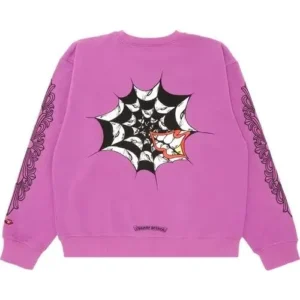When you think about the most iconic sneakers in streetwear history, a few silhouettes come to mind—the Nike Air Force 1, the Adidas Superstar, and more recently, the Yeezy line. But among these giants, there’s a unique contender that has carved its own path through the culture: the Bapesta. Designed by Japanese streetwear pioneer A Bathing Ape (BAPE), the Bapesta is more than just a sneaker. It’s a symbol of global fashion fusion, bold individuality, and timeless hype.
The Origins of the Bapesta: Where Culture Meets Innovation
The Bapesta made its debut in the early 2000s, created by Nigo, the founder of A Bathing Ape. Deeply influenced by hip-hop, Japanese street culture, and American fashion, Nigo saw the sneaker as a way to reinterpret something familiar in an entirely new context. The Bapesta is instantly recognizable due to its heavy resemblance to the Nike Air Force 1—but with a twist.
While the silhouette mirrors the Air Force 1, the Bapesta distinguishes itself through details like the star-shaped “STA” logo replacing the Swoosh, bold patent leather finishes, and vibrant colorways. This blend of homage and originality sparked controversy and admiration alike, creating buzz that helped BAPE explode onto the international stage.
What Makes the Bapesta Unique?
While it’s easy to reduce the Bapesta to just a Japanese version of the Air Force 1, doing so ignores what makes it unique. The sneaker represents a turning point in streetwear—where fashion, art, and subculture intersected in bold ways.
The use of patent leather on the Bapesta wasn’t just a design choice—it became a signature element. In an era dominated by mostly monochrome sneakers, the Bapesta’s flashy, reflective finishes in reds, yellows, blues, and greens brought a new sense of expression to footwear.
Then there’s the branding. Where many sneakers opt for subtlety, the Bapesta goes maximalist. The lightning-star “STA” logo doesn’t whisper; it shouts. The inclusion of cartoon graphics, camo prints, and even pop culture collaborations only added to its legendary status.
Collaborations That Shaped the Hype
One of the Bapesta’s major strengths lies in its collaborations. Nigo was ahead of the curve, realizing early on that strategic partnerships could elevate both the sneaker and the brand.
Over the years, BAPE has teamed up with Pharrell Williams, Kanye West, and even brands like Marvel and Hello Kitty. These collaborations weren’t just marketing moves; they were authentic expressions of culture. The Kanye West “Dropout Bear” Bapesta is now considered one of the most sought-after pairs in sneaker history.
BAPE’s understanding of limited releases, regional exclusives, and colorway scarcity has kept the Bapesta in a constant state of demand. Each collab injected new life into the silhouette while maintaining its core identity.
The Bapesta’s Role in Modern Sneaker Culture
As sneaker culture evolved, so did the Bapesta. Once primarily a hype product among fashion elites, it’s now embraced more broadly thanks to its enduring design and the nostalgia associated with early 2000s fashion.
The resurgence of Y2K aesthetics, especially among Gen Z, has brought renewed attention to the Bapesta. Today, it’s not uncommon to see celebrities, influencers, and even athletes rocking vintage pairs or new releases on social media, red carpets, and fashion weeks.
This reemergence highlights how the Bapesta has managed to remain relevant in a market that’s constantly looking for the next big thing. Rather than chasing trends, the Bapesta often sets them—simply by staying true to its roots.
Quality and Fit: A Sneakerhead’s Perspective
One aspect often discussed among sneakerheads is the Bapesta’s construction. While earlier models were sometimes critiqued for inconsistent sizing or material durability, recent releases have shown a noticeable improvement.
Modern Bapestas are crafted with better stitching, reinforced soles, and more refined leather. Still, the sizing remains unique—many recommend going a half-size up or down depending on the fit you’re used to with Nike or Adidas.
That said, comfort isn’t necessarily the Bapesta’s main draw. It’s a lifestyle sneaker meant to be seen and admired. If performance wear is what you need, look elsewhere. But if you’re after pure aesthetic and cultural cachet, the Bapesta delivers.
How to Style the Bapesta
Styling the Bapesta is all about confidence. This isn’t a subtle shoe; it’s a statement. For streetwear purists, pairing it with cargo pants, oversized graphic tees, and a fitted cap keeps the look authentic. For high-low fashion fans, mix the Bapesta with tailored trousers or a luxury trench coat for that elevated contrast.
Due to its bold colors, it’s often best to let the shoe do the talking—keep the rest of your outfit neutral and let the Bapesta pop. However, for those who like to go all out, matching your fit to your sneakers can create an eye-catching, curated look.
The Future of the Bapesta
With Nigo now working closely with brands like Louis Vuitton and Kenzo, the Bapesta’s design legacy continues to influence luxury fashion. And with A Bathing Ape constantly reinventing itself, there’s no reason to believe the Bapesta will lose its shine anytime soon.
Newer releases now feature sustainable materials, reflecting a growing industry-wide shift toward eco-conscious production. There’s also talk of upcoming AI-designed colorways and NFT integrations, showing that BAPE remains on the cutting edge of tech-meets-fashion.
Why the Bapesta Still Matters
The Bapesta is more than just a sneaker. It’s a cultural artifact. It reflects the merging of East and West, luxury and street, classic and futuristic. It stands as proof that fashion doesn’t always have to follow rules—it can make its own.
Whether you’re a seasoned sneakerhead with a vintage pair in your closet or a newcomer just discovering streetwear, the Bapesta offers a gateway into a richer world of self-expression. It’s not about fitting in. It’s about standing out.



